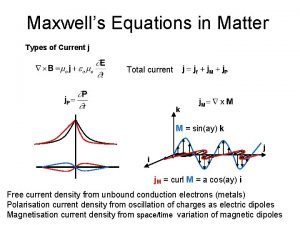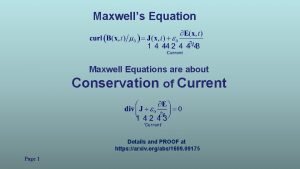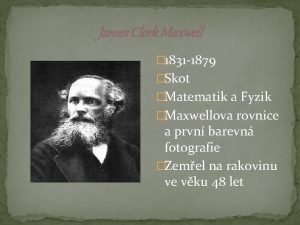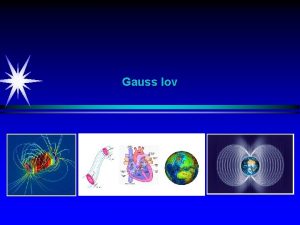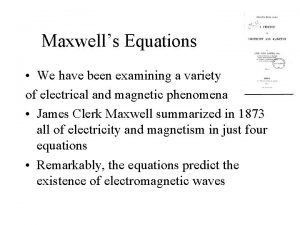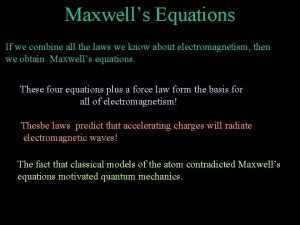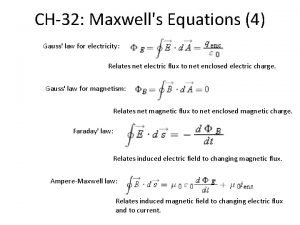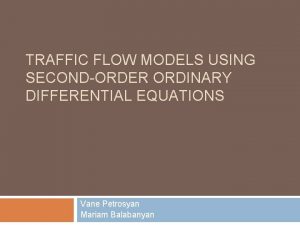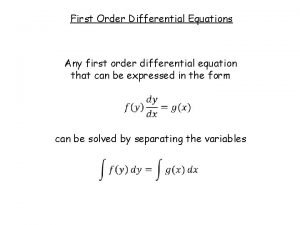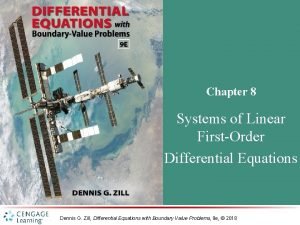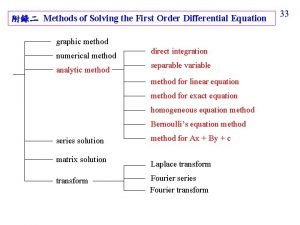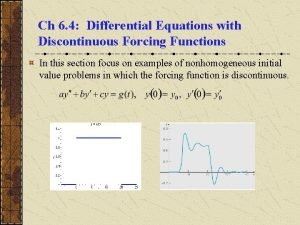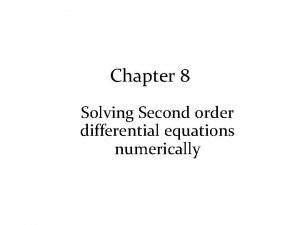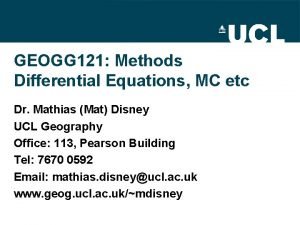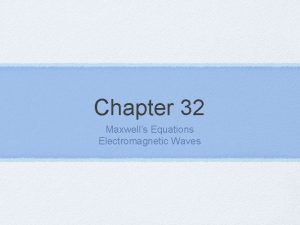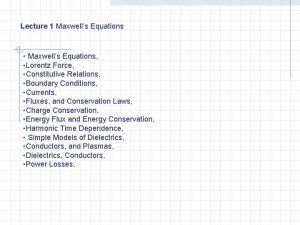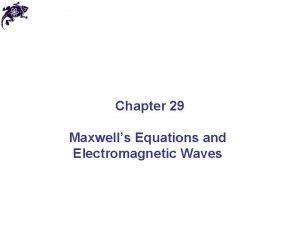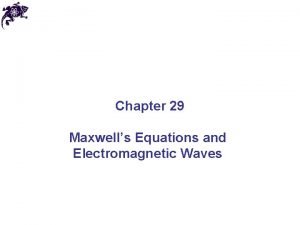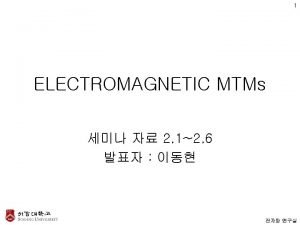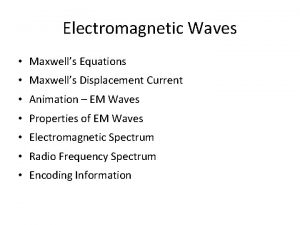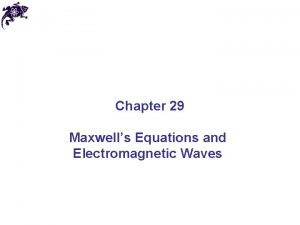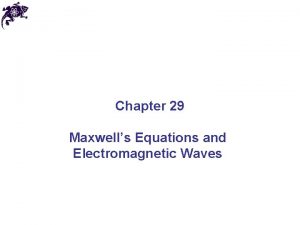1 Maxwells Equations Differential Forms 2 Maxwells Equations
















- Slides: 16

1

Maxwell's Equations (Differential Forms) 2

Maxwell's Equations (Integral Forms) 3

6. 8 Boundary Conditions for Electromagnetics 4

6. 8 Boundary Conditions for Electromagnetics 5 Inside a perfect electric conductor (PEC), E = 0, H = 0 in time-varying case. On a perflect electric conductor: En = ρs/ε, Et = 0 Hn = 0, Ht = Js

6. 9 Charge Current Continuity Relation 6 Current I out of a volume is equal to rate of decrease of charge Q contained in that volume: Used Divergence Theorem

Kirchoff's Current Law 7

6. 10 Free Charge Dissipation in a Conductor Question 1: What happens if you place a certain amount of free charge inside of a 8 material? Answer: The charge will move to the surface of the material, thereby returning its interior to a neutral state. Question 2: How fast will this happen? Answer: It depends on the material; in a good conductor, the charge dissipates in less than a femtosecond, whereas in a good dielectric, the process may take several hours. Derivation of charge density equation: Cont.

Solution to Charge Dissipation Equation 9 For copper: For mica: = 15 hours

6. 11 Electromagnetic Potentials 6. 11. 1 Retarded Potentials 10 Static condition Dynamic condition with propagation delay: Similarly, for the magnetic vector potent

6. 11. 2 Time Harmonic Potentials Time harmonic = Sinusoidal (정현파) Also: 11 If charges and currents vary sinusoidally with time: we can use phasor notation: Maxwell’s equations become: with Phasor expression for potentials become: (propation constant; 전파상수)

12 Cont.

13 Cont.

Example 6 -8 cont. 14 Cont.

Example 6 -8 cont. 15

Summary 16
 Maxwell's equations in matter
Maxwell's equations in matter Maxwells equations
Maxwells equations Maxwells equations
Maxwells equations Maxwells lover
Maxwells lover Faraday law maxwell equation
Faraday law maxwell equation Integral form of maxwell equation
Integral form of maxwell equation Maxwells laws
Maxwells laws Traffic flow differential equations
Traffic flow differential equations Integrating factor of differential equation
Integrating factor of differential equation Logistic growth example problems
Logistic growth example problems Mixing problems differential equations
Mixing problems differential equations Stewart differential equations
Stewart differential equations First order linear equation
First order linear equation Cengage differential equations
Cengage differential equations Differential equations with discontinuous forcing functions
Differential equations with discontinuous forcing functions Runge kutta second order formula
Runge kutta second order formula Integrating factor of differential equation
Integrating factor of differential equation
